WindFlow Engineering is a small consultancy company located in Kraków, Poland. We are small, but we are capable. Our experts have several years of experience working in the wind turbine industry sector. We are passionate about aerodynamics, fluid-structure interaction, multi-body dynamics, and wind turbine loads and control. We help design and deliver reliable wind turbine generators through expert knowledge, scientific computation, scientific analysis, and software development. Our experts helped design several blades for various OEMs and platforms. We have successfully participated in root cause analysis projects, where the accurate and swift scientific assessment of the problem at hand is paramount. We have also created several optimization tools that help engineers make the best design decision in an automated and reliable fashion. Find out more in our Portfolio below.
Education and experience
Our experts hold a Ph.D. degree in aerospace engineering or related fields. For several years we have helped multiple wind turbine OEMs to develop their products. On several occasions, we helped improve their design process, optimized rotor performance, and helped mitigate stall induced risks.
Tools and programming languages
There are industry-standard tools like Flex5, HAWC2, HAWCStab2, QBlade, and FAST. Our experts have been using these tools for years. Further, we know several programming languages, like Matlab, C/C#, Fortran, Java Script, Python, and many others. We can do research-level fluid flow computations using open-source, research, in-house, or commercial tools.
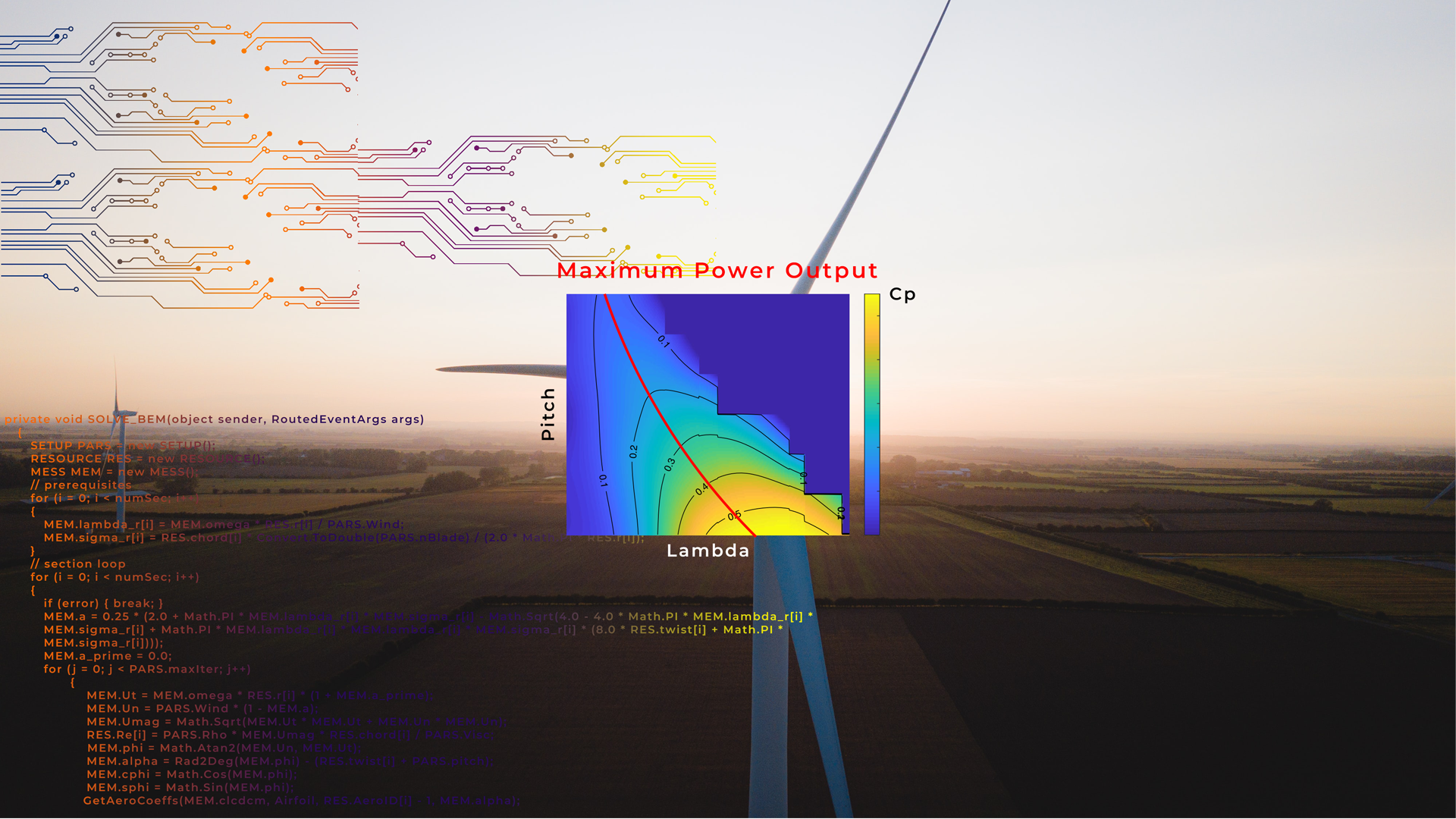
10MW Wind Turbine Optimization Example
Optimization of the open source 10MW wind turbine is described in this article. The optimizer aims to increase power production by tuning pitch schedule for the controller. Overall increase of AEP after tuning is around 0.36%.
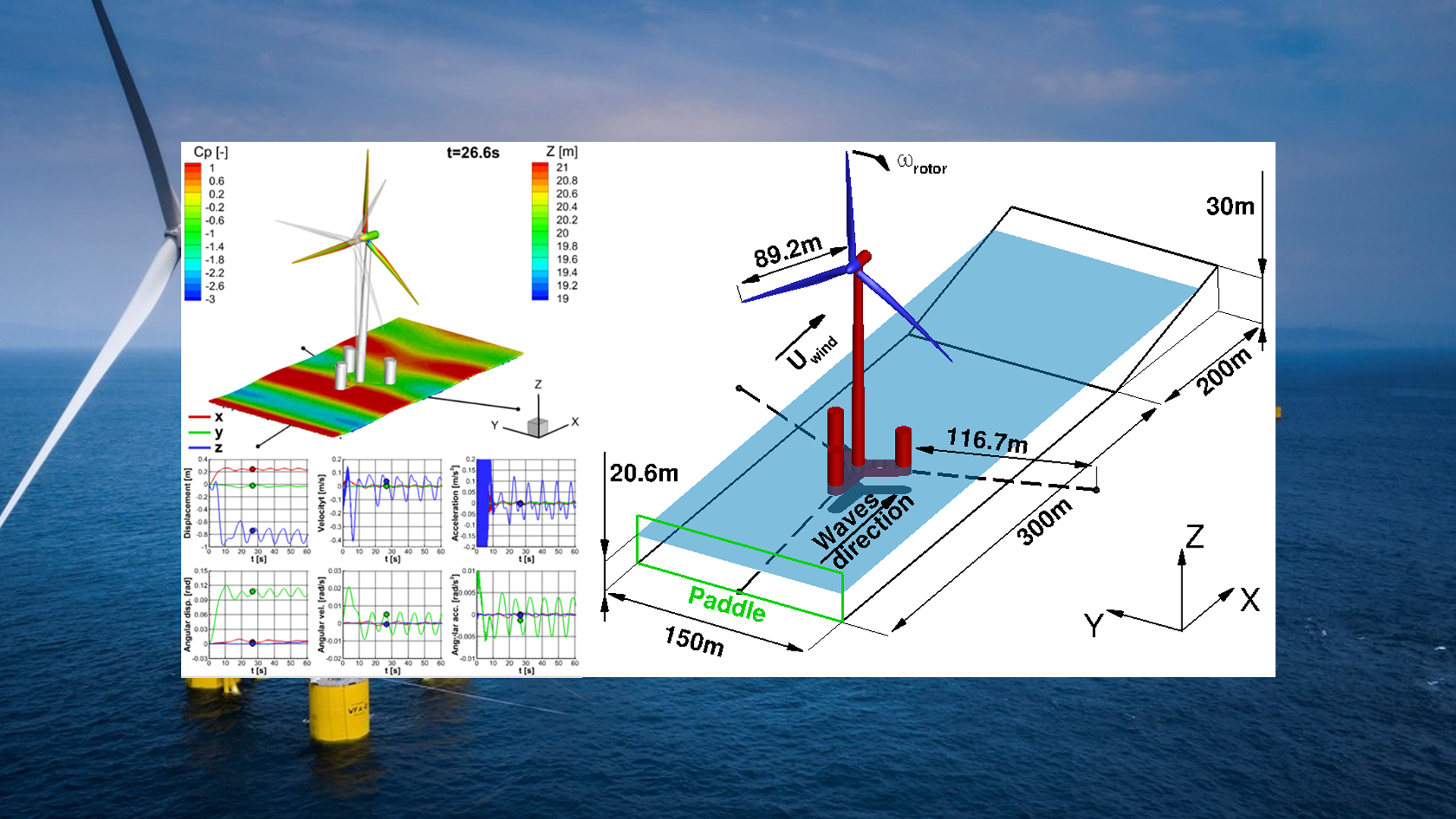
Floating wind turbine model
This project resulted in coupled model for floating off-shore wind turbines, using the DTU 10-MW machine as an example. The idea put forward is to employ high fidelity Navier-Stokes solvers for air and water.
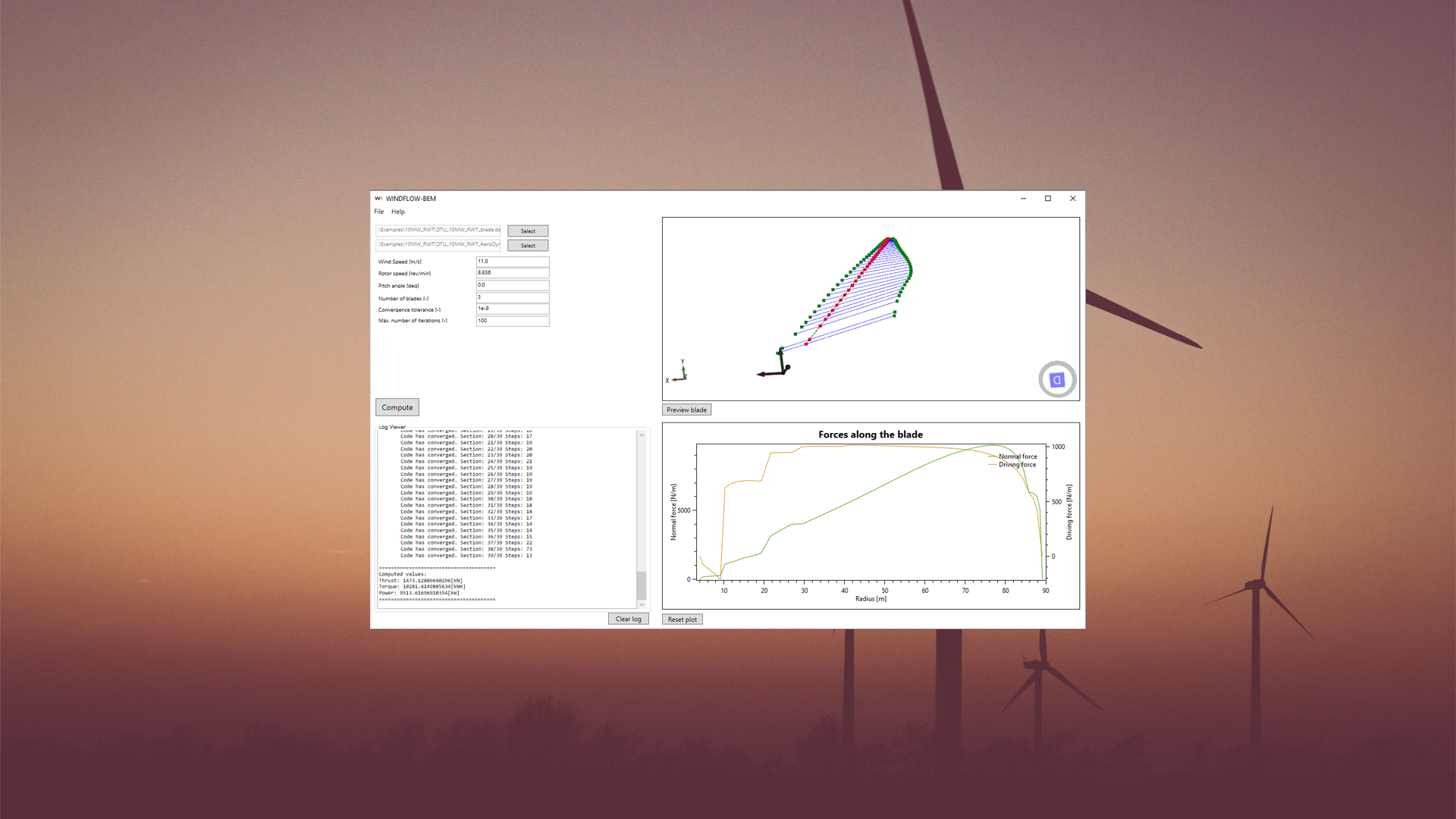
WindFlow BEM Solver
WindFlow BEM is a code with User Interface to perform aerodynamic calculations of horizontal axis wind turbines. It assumes steady aerodynamics and rigid structure. The code is based on Blade Element Momentum (BEM) theory, which combines blade element theory and momentum theory.

Multi-body solver
The Multi-Body Dynamic (MBD) solver is a general purpose tool capable of simulating any mechanical system. The basic assumptions of MBD are that bodies under consideration are rigid, and all joints are frictionless.
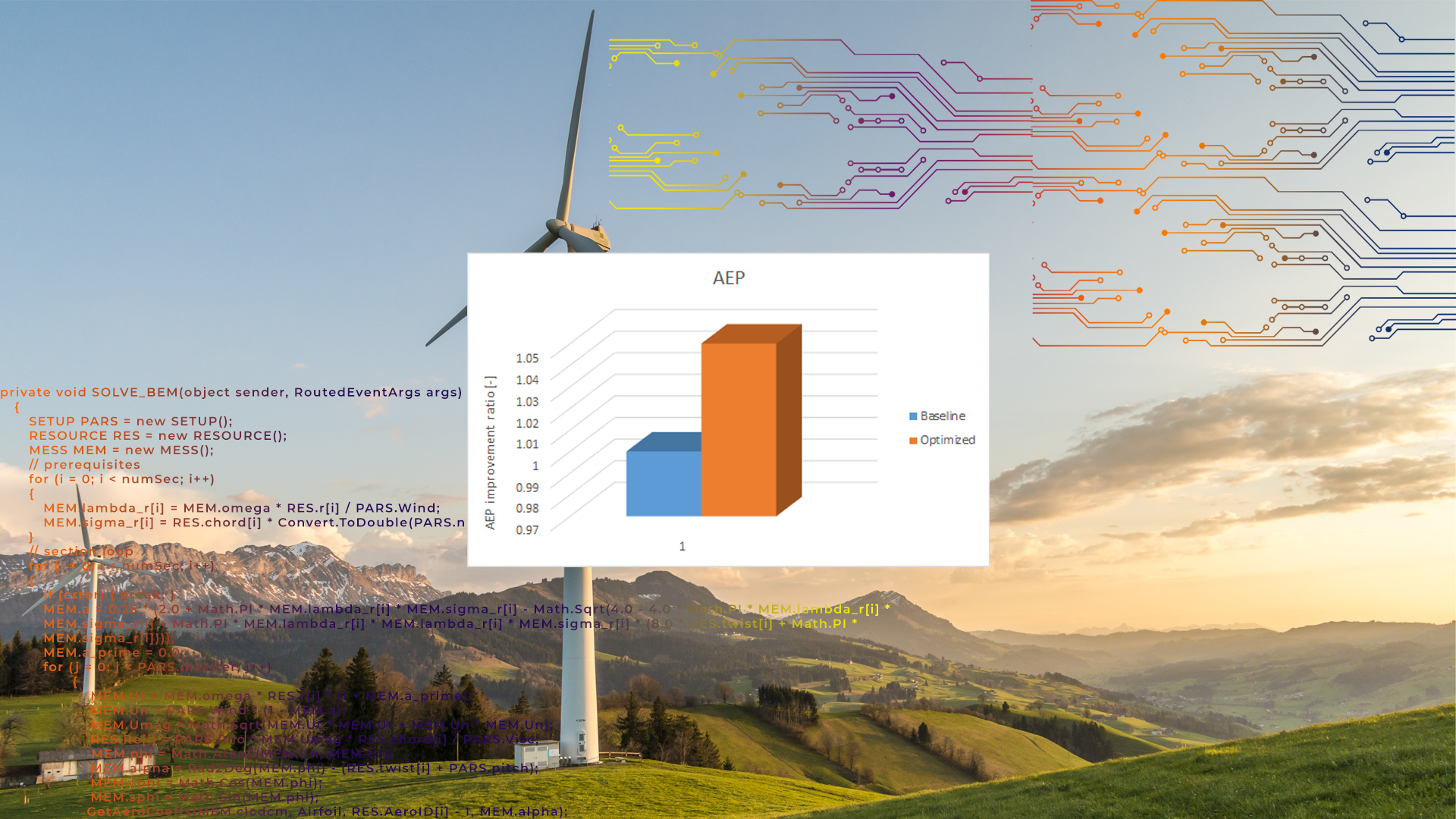
WTG performance optimization
The WindFlow Engineering experts specialize in wind turbine optimization - tailored for specific needs and markets. We constantly strive to improve the competitiveness of our customers' products.
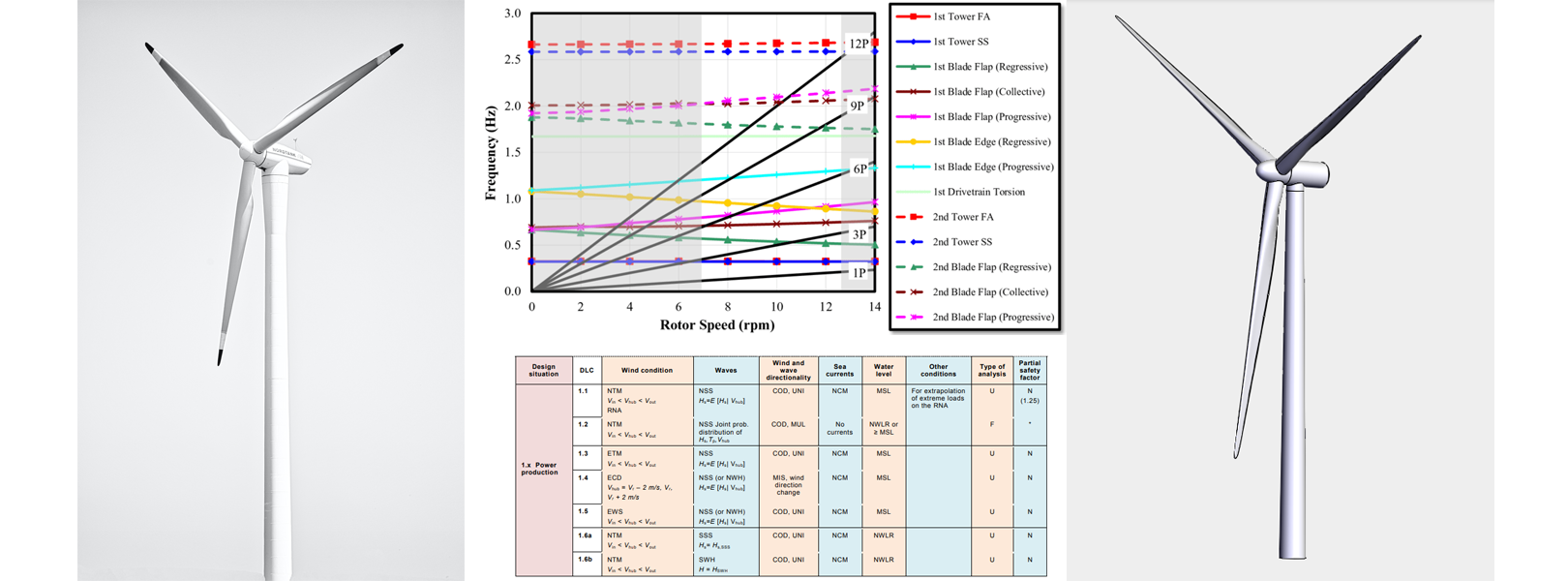
Blade design
WindFlow Engineering experts have excessive knowledge and experience in conducting blade design iterations. Also, we are experienced in conducting Root Cause Analysis studies, where the approach is tuned for the problem at hand.